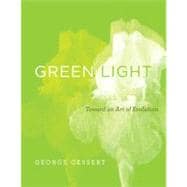
| Series Foreword | p. ix |
| Acknowledgments | p. xi |
| Publication History | p. xv |
| Introduction | p. xix |
| Divine Plants and Magical Animals | p. 1 |
| Aesthetic Effects of Domestication | p. 11 |
| The Rainforests of Domestication | p. 21 |
| The Rise of Ornamental Plants | p. 33 |
| Darwin's Sublime | p. 41 |
| Playing God | p. 47 |
| Standards of Excellence | p. 53 |
| Doubles | p. 61 |
| Kitsch Plants | p. 81 |
| Bastard Flowers, Genetic Goofies, and Freud's Bow Wows | p. 93 |
| Biotechnology in the Garden | p. 107 |
| Recent Art Involving DNA | p. 111 |
| Naming Life | p. 125 |
| Anthropocentrism and Genetic Art | p. 133 |
| The Angel of Extinction | p. 143 |
| Seven Breeding Complexes | p. 153 |
| The Slowest Art | p. 171 |
| Breeding for Wildness | p. 177 |
| Organisms in Bio Art | p. 185 |
| Bio Art Terminology | p. 191 |
| The Four Main Types of Double Flowers | p. 193 |
| Books and Catalogs on Biotech Art Published since 2000 | p. 195 |
| Notes | p. 197 |
| Index | p. 219 |
| Table of Contents provided by Publisher. All Rights Reserved. |
The New copy of this book will include any supplemental materials advertised. Please check the title of the book to determine if it should include any access cards, study guides, lab manuals, CDs, etc.
The Used, Rental and eBook copies of this book are not guaranteed to include any supplemental materials. Typically, only the book itself is included. This is true even if the title states it includes any access cards, study guides, lab manuals, CDs, etc.